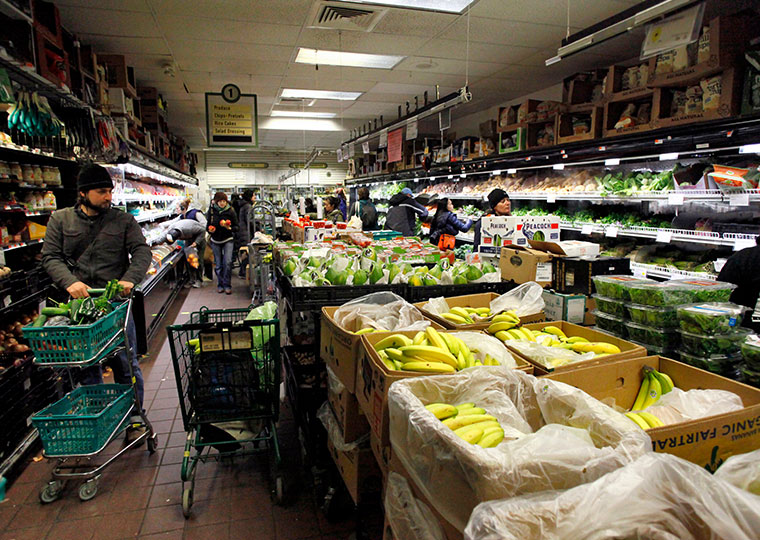Customer loyalty, barriers to entry and other factors at play
In a conference room somewhere, as you read this, some corporate executives are likely discussing a potential merger and wondering — if they pull it off — how much the combined company could raise prices. A company lawyer is very likely present so that the meeting’s discussion can be regarded as privileged (not discoverable by litigants), and writing instruments and such may be absent, given worries that antitrust regulators wouldn’t endorse the discussions.
In a mature business, where demand grows slowly and established players have already squeezed costs (potato chips, cleaning products), price is the holy grail to fatter profit margins. And for startups that grow rapidly by selling a product or service below their cost to gain market share (software, ride-hailing), hoping their wares are habit forming (sticky), price is ultimately the path to becoming profitable. Selling dollar bills for 99 cents apiece is rarely a great long-term strategy.
Opt In to the Review Monthly Email Update.
Companies prefer to talk about their enhanced service offerings (software) and wider geographic reach (airlines, banks) when they combine, but, in many deals, the main goal is to reduce competition and thus raise prices. A working paper by Fudan University’s Derui Wang and Xiaole Wu, UCLA Anderson’s Christopher Tang, and Fudan’s Yue Dai resembles a pre-merger bull session in which a corporate team tries to suss out whether, and by how much, various business combinations might support higher pricing.
Can a Merger Reduce Competition and Bring Higher Prices?
The researchers’ discussion focuses in part on ride-hailing, dominated in the U.S. by Uber and Lyft, which in June 2022 were sued over their pricing power, notably in this case by drivers, not customers. The researchers don’t discuss that litigation or refer to any ride-hailing companies specifically, rather constructing a theoretical model to test notions of which sorts of mergers make sense from the point of view of the companies.
Consider a market, such as one for ride-hailing or food delivery. Company A is large and competes with two smaller, identical rivals, B and C. Each company has its share of loyal riders but must compete for “disloyal switchers” who seek the lowest price. Competition for this group can be fierce, and a merger can ease this pressure. Should the large company buy one of the smaller firms, or should the two small companies join forces? Or would it be best for all three to remain independent? (Antitrust laws would forbid a merger of all three.)
To answer the question, the authors consider two key factors in the decision to merge: the companies’ base of loyal customers and their capacity to serve both the loyal and price-conscious markets.
Customer Loyalty Trumps All
Their findings suggest that the companies’ loyal customer base plays an outsized role in determining which option is most profitable. For example, consider the simple situation where all the companies have roughly the same number of loyal customers:
- If the size of the loyal customer segment is relatively small and the smaller companies have large but limited capacity, a merger between the large company and one of the smaller ones is most profitable.
- However, if the base of loyal customers is small and the smaller companies have unlimited capacity, then the best option is for all the companies to remain independent.
- Remaining independent is also the best course when the companies have lots of loyal customers and the small ones lack the capacity to accommodate those who might switch.
- In the more realistic situation where the large company has a much larger base of loyal customers, the large company can earn sufficient profits serving just that group while the smaller ones will be forced into a bitter price war for the remaining switchers. In this case, a merger between them is the more profitable course.
“The size of the loyal segment is a key factor that drives merger decisions,” says Tang in an email.
Price Effect Versus Demand Effect
The reason? The number of loyal customers and a company’s capacity to serve them produce two effects that, when they interact, determine whether a merger will be profitable. On one side is a “price effect.” Because a merger reduces the number of competitors in the market, the newly combined company can raise its prices and increase profits. This is a positive force in favor of a merger.
At the same time, a merger also limits the combined companies’ ability to capture all the available demand they could get as stand-alone firms. When independent, one company might offer a lower price and win a larger market share. If they merge, the low-price competitor loses that flexibility and will forgo some potential demand. The resulting “demand effect” has a negative influence on a merger decision.
For example, when the three companies have a relatively small number of loyal customers, if the small companies have a limited capacity to serve most or all of the large pool of potential switchers, competition among all three companies will be intense and drive down prices. A merger between the large and one of the small companies not only takes a competitor off the field, but it also leaves the remaining small company without enough capacity to compete effectively. Prices will rise, and even the stand-alone firm can raise prices to reap the most profits from its loyal base.
Price competition can be extreme and still not lead to a merger. When the loyal base is small and the small companies have the capacity to satisfy all switchers, all three will engage in a three-way price war. While a merger could ease this competition so that the combined companies can raise prices, the stand-alone firm can counter with a lower price and easily sweep up the available price-conscious customers. The demand effect counteracts the price effect, and all companies are better off remaining independent.
Featured Faculty
-
Christopher Tang
UCLA Distinguished Professor; Edward W. Carter Chair in Business Administration; Senior Associate Dean, Global Initiatives; Faculty Director, Center for Global Management
About the Research
Wang, D., Wu, X., Tang, C.S. & Dai, Y. (2022). Endogenous Merger Decisions among Competitors: Impact of Limited Capacity and Loyal Segments.
http://dx.doi.org/10.2139/ssrn.3791066






